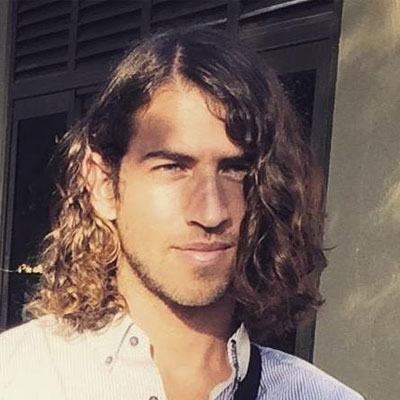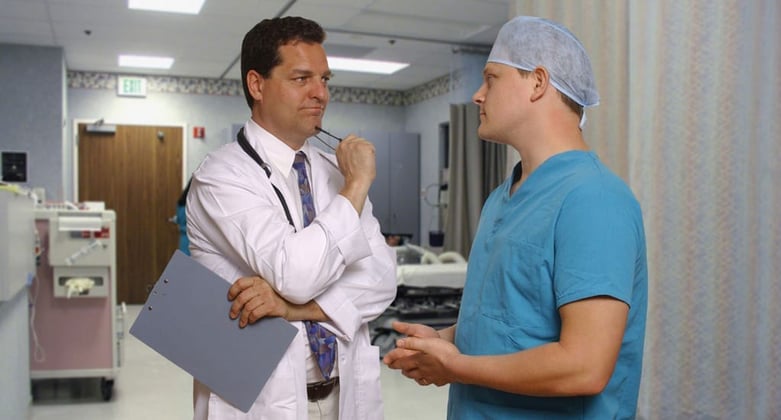The United States faces a shortage of up to 120,000 physicians by 2030, with a shortfall as high as 49,300 physicians in primary care alone, according to data published in April 2018 by the AAMC (Association of American Medical Colleges). Many primary care residency positions go unfilled each year, yet a growing percentage of domestic medical school graduates choose to pursue specialty care as opposed to primary care. Increasingly, it is Caribbean medical schools and their graduates that are filling this void left behind by domestic medical schools.
In this article, the UMHS Endeavour Blog examines the relationship between the growing need for primary care physicians in the US, and how Caribbean medical schools are helping to ameliorate this demand. We look at what primary care doctors do, the types of residencies available and why they are so in-demand. In addition, we will explore the reasons why there is a shortage of primary care physicians, areas of the nation with the biggest shortages, the high cost of specialty care, why many US graduates choose specialty care over primary care, and how Caribbean medical school graduates help fill this vital need left by domestic graduates.
What is Primary Care and Why is it Important?
Primary care physicians (sometimes referred to by the acronym PCP) help provide crucial preventive and ongoing care. They treat a variety of common illnesses, prescribe medication, order regular blood work, screen patients for serious diseases like cancer and give referrals to specialists. The American Academy of Family Physicians (AAFP) defines primary care physicians as those working in Internal Medicine, Family Medicine and Pediatrics “who provide definitive care to the undifferentiated patient at the point of first contact, and take continuing responsibility for providing the patient's comprehensive care.”
Primary Care Progress, a national nonprofit advocate, notes on its website the following reasons why PCPs are so vital today. “Through routine check-ups, primary care can head potentially serious problems off at the pass. As a result, adults in the U.S. who have a primary care provider have 19% lower odds of premature death than those who only see specialists for their care.”
Primary care also helps lower costs. “People who have a primary care provider save 33% on healthcare over their peers who only see specialists,” the organization’s website said. “Access to primary care helps keep people out of emergency rooms, where care costs at least four times as much as outpatient care. A study in a North Carolina ER found that nearly 60% of the patients’ problems could have been addressed in a primary care clinic for a savings of a whopping 320-720% – that’s a value of three to seven times less.”
Primary care relies more on hands-on medicine and one-on-one doctor-patient interaction and less on procedures to help prevent and treat illnesses.
“Catching and treating problems early, which happens during annual check-ups, is also cheaper than treating severe or advanced illness, which often brings patients to specialists,” the Primary Care Progress website noted. “If everyone saw a primary care provider first for their care, it would save the U.S. an estimated $67 billion every year.”
PCP Shortages in Rural and Inner-City Areas
Of the 120,000 physicians needed by 2030, according to the AAMC, nearly 50,000 primary care doctors will be necessary to meet the growing demand in the USA. However, this problem isn't spread out evenly - the biggest shortages are in rural and inner-city areas, where health outcomes are already among the worst.
Rural areas in the US are particularly in need of primary care physicians. An April 2018 rural health care report by the University of Nebraska Medical Center said that, although Nebraska saw an 11% increase in the number of physicians over the past decade, 13 counties in Nebraska do not even have a primary care physician.
"Some programs have helped increase the number of rural health professionals, but there still exists substantial recruiting challenges to bolstering the health workforce and access to health care in rural and underserved areas," said Fernando Wilson, Ph.D., acting director of the UNMC Center for Health Policy and lead author of the report.
Inner-city areas also desperately need primary care physicians, according to the American Medical Student Association (AMSA). AMSA cites several problems unique to inner-city areas and medical care. Dr. Fitzhugh Mullan, Head Professor of Medicine and Health Policy at George Washington University, worked for decades in inner-city areas of Washington, D.C. He pointed out the myriad challenges inner-city neighborhoods face. Dr. Mullan said doctors working in these areas must be trained “not only in medical diagnosis but in the realities of the streets and lifestyles of those living in inner-city neighborhoods.”
Part of the problem in this disparity lies in the fact that doctors are simply more likely to return to practice medicine in an area similar to where they grew up. A Western Journal of Medicine study showed that medical students with rural roots are more likely to return to rural areas to practice medicine after graduation.
We just aren't accepting enough medical students from inner-city and rural areas. US medical schools have been accused of failing at not accepting more minority students and students from inner-cities. Amanda Holpuch wrote about the issue in an April 25, 2018 post in the Guardian, “ten of the top U.S. medical schools including Harvard and Yale do not have faculty and staff that reflect the country’s black, Native American and Latino population..."
Specialty Care and US Graduates Not Choosing Primary Care
So, why aren’t more US medical school graduates applying for primary care residencies? Matthew Mintz, M.D., outlined the numerous reasons in a Primary Care Progress post “Why Aren’t Medical Students Choosing Primary Care (and Why They Should).”
Dr. Mintz argues that most US graduates aren’t concerned about the difference in salary for primary care physicians compared to other specialties.
“In my opinion, it’s because they don’t like what they see when they are exposed to outpatient primary care during medical school,” he said in the post. “Their primary care preceptor is frustrated with treating complex medical conditions in 15-minute time slots. Their primary care faculty waste time on the phone with insurance companies, exasperated because they are unable to get their patients the treatment they need. Frustrated patients sit in waiting rooms for 30 minutes or more only to get rushed through a 10-minute visit with their doctor, who is constantly behind schedule.”
However, Dr. Mintz notes that new developments and improvements are just around the corner.
“The good news for students interested in primary care is that the practice of primary care is changing,” he said. “It has to because the current health care system is broken, particularly in the primary care setting.
Anyone familiar with the current divisive political environment in the US knows medical care will be a key issue in the 2020 presidential election, with millennial and Generation Z progressives advocating a “Medicare for All” healthcare system overhaul. While change in the current system is not guaranteed and may take a few years and is based on the outcome of future elections, the need for more primary care physicians will continue to grow.
“I strongly recommend that students keep their minds open to primary care and realize that what they may see today will likely be very different and dramatically improved by the time they complete their residencies,” Dr. Mintz said.
US Medical Schools Increasingly More Competitive
Many gifted people want to become primary care doctors and practice medicine in the underserved areas from which they hail, but get frustrated with US medical schools and their rigid acceptance standards. Although applications are on the rise, the acceptance rate at US medical schools has actually decreased, according to an article in U.S. News and World Report in late 2017.
“US News data reveal that medical school acceptance rates have dropped over the past decade and that this decline is particularly pronounced among the top 10 Primary Care programs,” U.S. News and World Report’s Illana Kowarski wrote. “The average acceptance rate at these programs nearly halved between 2006 and 2016, falling from 8.8 percent for the class entering in 2006 to 4.6 percent for the class entering in 2016.”
As competition for seats at domestic medical schools rises, prospective medical students from less privileged backgrounds are inevitably at a greater disadvantage. This in turn amplifies the cycle of disparity in primary care, given that it is the less privileged student population that is more likely to return to practice in hospitals with the greatest need.
Caribbean Medical Schools Provide Hope
As an alternative, each year thousands of prospective medical students unable to gain entry into US and Canadian medical schools turn to Caribbean medical schools. Students graduating from Caribbean medical schools on average are more likely to choose primary care residencies and residencies in rural and inner-city hospitals. A Washington Post article published in June 2018 noted how international medical school graduates “tend to practice in locales and disciplines where the need is greatest.”
“More than half of medical students educated in the Caribbean choose primary care, compared to one-third of US-educated students,” the Washington Post article said.
A 2015 study published in the Journal of the American Osteopathic Association, “International Graduates in the U.S. Physician Workforce” by Padmini D. Ranasinghe, M.D., MPH included some surprising statistics.
“International medical graduates (IMGs) play a vital role in the US health care system,” Dr. Ranasinghe said. “These graduates represent 26% of physicians in practice and 24% of residents in specialty programs. All IMGs go through US medical licensing examination and credentialing verification to receive certification from the Educational Commission for Foreign Medical Graduates (ECFMG) to become eligible to enter the US graduate medical education process. Compared with US graduates, IMGs tend to practice in primary care and in underserved and rural areas.”
In the conclusion to his study, Dr. Ranasinghe said the U.S. medical community needs to take IMGs seriously.
“International medical graduates currently represent a quarter of the physician workforce and physicians in training,” he said. “They have long been an integral part of the US health care system, contributing substantially to primary care disciplines and providing care in underserved populations. As the US health care system continues to evolve, leaders must recognize the important role that IMGs fill.”
In a March 2018 article in the Advocate in Baton Rouge, Louisiana, “Family Medicine doctors in state increasingly come from international schools to meet health needs,” reporter Andrea Gallo discussed how the majority of Family Medicine doctors in the area come from international medical schools.
“Louisiana's rural areas are especially in need of primary care physicians, as the state ranks low on national health and wellness measurements and access to care is a common problem,” Ms. Gallo wrote. “Baton Rouge Family Medicine physician Derek Anderson estimated that around 55 percent of the Family Medicine residency spots in Louisiana for newly minted doctors are now being filled by international medical school graduates, while around 45 percent have US medical school graduates in them.”
The Advocate said six of the eight new Family Medicine doctors for 2018 at Baton Rouge General were graduates of Caribbean medical schools.
“Baton Rouge General has seen its percentage of residents who come from international medical schools spike over the past four years,” Ms. Gallo wrote. “International schools trained 63 percent of their residents in 2014, in comparison to 78 percent of their residents last year.”

Ryan is the Director of Marketing at UMHS. He holds a Masters in Public Health from the University of Southern California and a BA in Marketing from the University of Maryland, College Park. He is also a musician an avid outdoorsman.
















